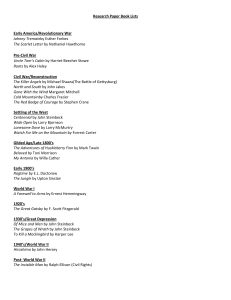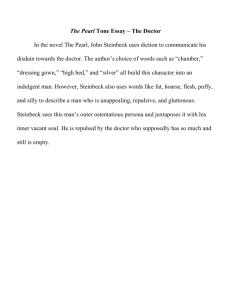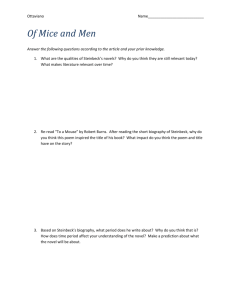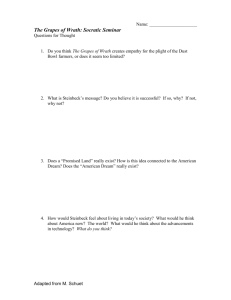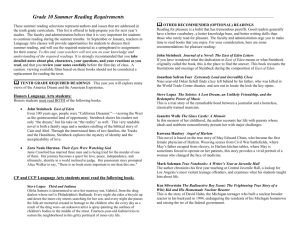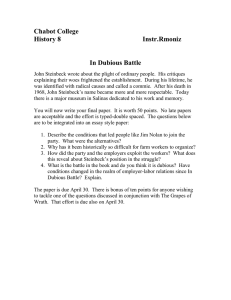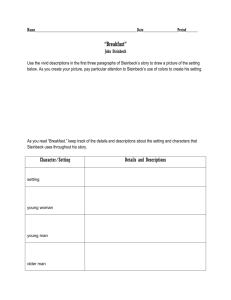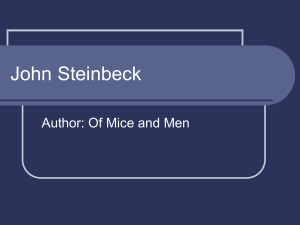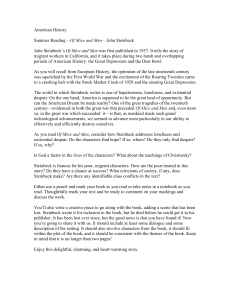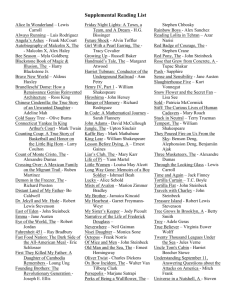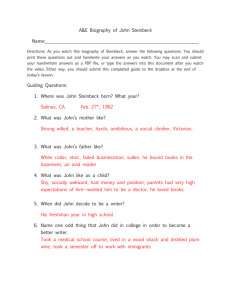Model—Circularity of the Written Commentary
advertisement
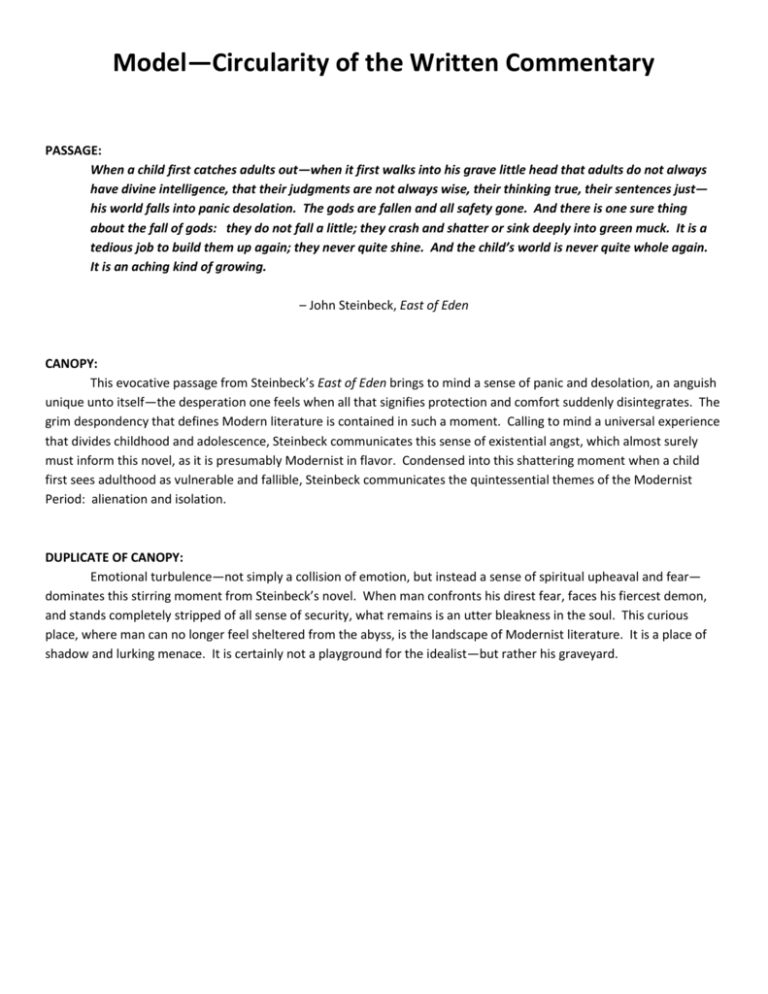
Model—Circularity of the Written Commentary PASSAGE: When a child first catches adults out—when it first walks into his grave little head that adults do not always have divine intelligence, that their judgments are not always wise, their thinking true, their sentences just— his world falls into panic desolation. The gods are fallen and all safety gone. And there is one sure thing about the fall of gods: they do not fall a little; they crash and shatter or sink deeply into green muck. It is a tedious job to build them up again; they never quite shine. And the child’s world is never quite whole again. It is an aching kind of growing. – John Steinbeck, East of Eden CANOPY: This evocative passage from Steinbeck’s East of Eden brings to mind a sense of panic and desolation, an anguish unique unto itself—the desperation one feels when all that signifies protection and comfort suddenly disintegrates. The grim despondency that defines Modern literature is contained in such a moment. Calling to mind a universal experience that divides childhood and adolescence, Steinbeck communicates this sense of existential angst, which almost surely must inform this novel, as it is presumably Modernist in flavor. Condensed into this shattering moment when a child first sees adulthood as vulnerable and fallible, Steinbeck communicates the quintessential themes of the Modernist Period: alienation and isolation. DUPLICATE OF CANOPY: Emotional turbulence—not simply a collision of emotion, but instead a sense of spiritual upheaval and fear— dominates this stirring moment from Steinbeck’s novel. When man confronts his direst fear, faces his fiercest demon, and stands completely stripped of all sense of security, what remains is an utter bleakness in the soul. This curious place, where man can no longer feel sheltered from the abyss, is the landscape of Modernist literature. It is a place of shadow and lurking menace. It is certainly not a playground for the idealist—but rather his graveyard.
